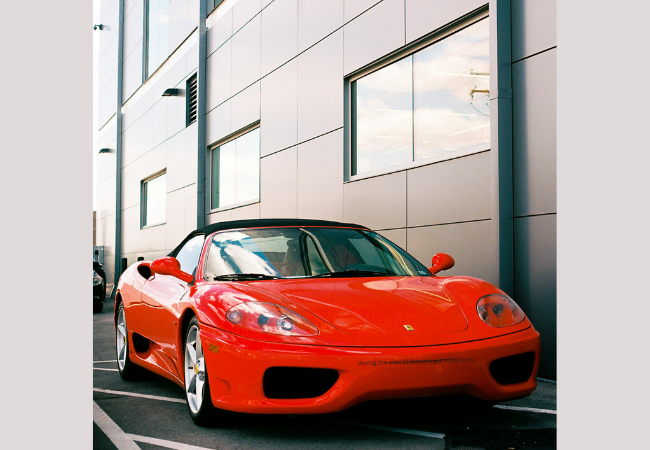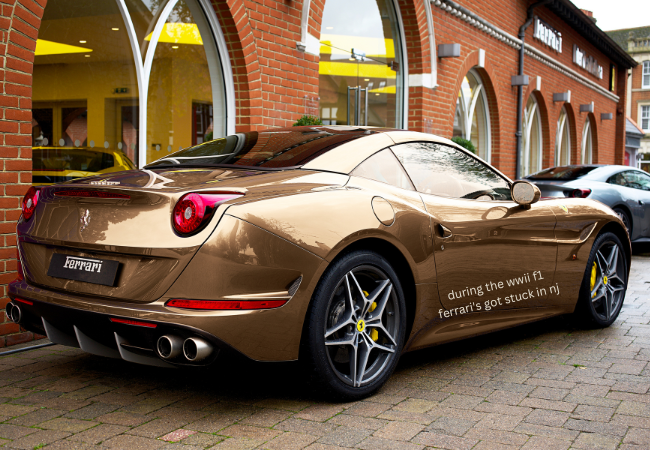During the wwii f1 ferrari’s got stuck in nj

During the wwii f1 ferrari’s got stuck in nj, many companies faced unique challenges, and Ferrari was no exception. Known for its luxurious and high-performance cars, Ferrari’s history includes a lesser-known episode involving its vehicles being stuck in New Jersey. This article explores this intriguing chapter, providing insight into Ferrari’s wartime experiences and the broader context of the automotive industry during this tumultuous period.
Ferrari’s Early Years
Ferrari During WWII
WWII had a profound impact on industries across the globe, and Ferrari was no different. The war led to resource shortages, disrupted supply chains, and altered market demands. Ferrari, like many other manufacturers, had to shift focus from luxury automobiles to contributing to the war effort, including manufacturing components for military vehicles and machinery.
Ferrari’s Connection to New Jersey
The presence of Ferrari vehicles in New Jersey during WWII is an intriguing part of history. The reasons for these cars being in the United States, and specifically New Jersey, during the war are complex, involving international trade, logistics, and possibly the preservation of valuable assets during uncertain times.
The Incident in New Jersey
Details about the incident where Ferrari cars were stuck in New Jersey are sparse but captivating. It appears that a shipment of Ferrari vehicles, possibly intended for safe storage or sale in the U.S., became stranded. This could have been due to logistical issues, such as transportation disruptions caused by the war, or bureaucratic hurdles.
The Models Involved
The specific models of Ferrari involved in this incident are not widely documented, but they likely included early examples of the brand’s sports cars or vehicles related to Ferrari’s industrial efforts during the war. These models are of significant historical interest to collectors and automotive historians today.
Logistical Challenges
The war presented numerous logistical challenges for companies like Ferrari. Transporting goods, especially luxury items like cars, across the Atlantic was fraught with difficulties, including the threat of military conflict, shipping restrictions, and prioritization of wartime supplies.
Ferrari and the War Effort
Ferrari, like many other manufacturers, was involved in supporting the war effort. This involvement ranged from direct production contributions to adjusting business operations to survive in a war-torn economy. The company’s shift in focus during this time underscores the resilience and adaptability of the brand.
Post-War Recovery
After WWII, Ferrari, like much of the world, faced the challenge of rebuilding. The company resumed its focus on producing high-quality sports cars, leveraging the technological advancements and lessons learned during the war. This period marked the beginning of Ferrari’s ascent to becoming a global icon in the automotive industry.
Legacy of the Incident
The episode of Ferrari cars being stuck in New Jersey, while a minor footnote in the broader history of WWII, is a fascinating aspect of the brand’s legacy. It highlights the interconnectedness of global events and their impact on businesses, even those involved in luxury goods like automobiles.
Ferrari’s Growth Post-WWII
In the years following the war, Ferrari experienced significant growth. The company quickly became renowned for its engineering excellence, winning numerous races and establishing a reputation for performance and luxury. This growth was fueled in part by the lessons and innovations developed during the war.
Ferrari’s Influence in the U.S.
The incident in New Jersey may have influenced Ferrari’s market presence in the U.S., one of its most important markets today. The wartime story adds a layer of depth to the brand’s narrative in America, where it is now celebrated as a symbol of Italian craftsmanship and racing heritage.
Collectors and Historians
The WWII-era Ferrari models and the stories associated with them are of great interest to collectors and historians. These vehicles are rare, often unique examples of early Ferrari engineering and design, and their stories contribute to the rich tapestry of automotive history.
Restoration and Preservation
Efforts to restore and preserve Ferrari vehicles from the WWII era are ongoing. These cars, often considered pieces of history, are meticulously restored to their original condition, preserving the legacy of one of the world’s most iconic car brands.

Lessons Learned
The challenges Ferrari faced during WWII and the incident in New Jersey offer lessons in resilience and adaptability. Companies today can learn from these experiences, understanding the importance of flexibility and the ability to pivot in response to external challenges.
The Cultural Impact of Ferrari
Ferrari’s role in car culture is immense. The brand’s history, including lesser-known stories like the New Jersey incident, contributes to its mystique and cultural significance. Ferrari represents not just a car brand but a lifestyle and a symbol of aspiration and achievement.
Ferrari’s Military Involvement
While Ferrari’s primary focus has always been on sports cars, the company’s wartime contributions included producing machinery and components for military use. This aspect of Ferrari’s history illustrates the diverse applications of the company’s engineering expertise.
Ferrari and Innovation
The technological advancements Ferrari made during and after WWII played a crucial role in the company’s success. Innovations in engine design, aerodynamics, and materials science were partly driven by wartime needs and later translated into the world of racing and sports cars.
Public Perception
The public’s perception of Ferrari during and after WWII was likely shaped by its adaptability and contributions to the war effort. Post-war, the brand’s focus on high-performance sports cars quickly reestablished its identity as a leader in automotive excellence.
Future of Ferrari
Conclusion
The story of Ferrari cars getting stuck in New Jersey during WWII is a unique and fascinating chapter in the history of an iconic brand. It highlights the challenges faced by companies during wartime and underscores the resilience and adaptability that have become hallmarks of Ferrari. This incident, though relatively obscure, is part of the rich tapestry of Ferrari’s history, contributing to the brand’s mystique and enduring appeal.
Frequently Asked Questions (FAQs)
What happened to Ferrari cars in New Jersey during WWII?
During WWII, a shipment of Ferrari cars reportedly got stuck in New Jersey, possibly due to logistical challenges and wartime disruptions.
Why were Ferrari cars in New Jersey during the war?
The exact reasons are unclear, but it could involve preservation of assets, potential sales, or other business-related decisions impacted by the war.
Which Ferrari models were involved in the New Jersey incident?
Specific models are not well-documented, but they likely included early examples of Ferrari’s vehicles, which are now of historical interest.
How did WWII affect Ferrari as a company?
WWII disrupted Ferrari’s operations, forcing the company to contribute to the war effort and adapt its business strategies, which later influenced its post-war success.
Did Ferrari make military vehicles during WWII?
Ferrari contributed to wartime production by manufacturing components and machinery for military use, showcasing the company’s engineering capabilities.
What is the legacy of Ferrari’s WWII experience?
Ferrari’s WWII experience, including the New Jersey incident, is a testament to the company’s resilience and adaptability, contributing to its storied history and enduring brand identity.
Conclusion
The tale of Ferrari’s WWII-era cars being stuck in New Jersey is a captivating and lesser-known chapter of automotive history. It reflects the broader impact of global events on businesses and offers a unique insight into the challenges and resilience of Ferrari during one of the most turbulent times in modern history. This story, while just a small part of Ferrari’s legacy, adds depth to the brand’s narrative and continues to intrigue car enthusiasts and historians alike.



